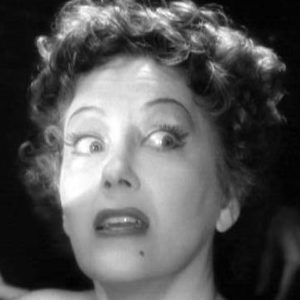At the moment I’m writing a book. It is called Designs on the Past: How Hollywood Created the Ancient World. It is all about movie-making in Hollywood and movie-watching in twentieth-century America (and Britain). All of the movies I explore in the body of the book are classified as ‘epics’ – a distinct and popular cinematic genre which played a central role in twentieth-century filmmaking and defined the ancient world for generations of spectators. Designs on the Past will provide a comprehensive study of how epic films were made during the period 1916-1965. The book examines issues of film-promotion, the casting of actors, set design, costume, hair and make-up design, music and sound, script, editing, and post-production marketing. The book keeps one vital point in mind: Hollywood film making was an industry and films were primarily made and sold as financial ventures. Sure, Hollywood movies could have integrity and artistic flair, but epic films, with their grandiose budgets, rarely took artistic risks; epics were the most conservative and conventional of the movies produced during the Golden Age of Hollywood.
I’m mad about old-time Hollywood. I collect pressbooks, original memorabilia, autographs of the stars, designs… All of these things are helping me put the book together. I love epic movies and I’m not ashamed to say that I am a product of overdosing on epics (like Ben Hur, Cleopatra and Quo Vadis) when I was a child. The more I watched epic movies, the more I became attuned to the ‘language’ of the genre – the conventions which traditionally combined to make the epics ‘Epic’. I became familiar with the works of the movie stars who performed in epics, the directors who created them, and the designers who visualised them – and as I did I came to realize the deep impact which epic films had on contemporary American filmmakers and cinema audiences.
 This is what I want to comment on here. In this blog and a follow-up post, I want to explore how deep-set epic conventions were in Hollywood filmmaking. To do so we need to sharpen our focus and zoom in for a close up on another kind of Hollywood classic: Sunset Boulevard (dir. Billy Wilder, 1950), the greatest Hollywood movie about Hollywood movies. As an Academy Award winning film noir classic, the movie is a darkly humorous, pessimistic, and caustic indictment of the business of making Hollywood movies; no other film better represents Hollywood’s vision of itself. MGM boss Louis B. Mayer was furious at the film’s exposé of Hollywood, and he thundered at Billy Wilder, ‘You have disgraced the industry that made and fed you. You should be tarred and feathered and run out of Hollywood!’
This is what I want to comment on here. In this blog and a follow-up post, I want to explore how deep-set epic conventions were in Hollywood filmmaking. To do so we need to sharpen our focus and zoom in for a close up on another kind of Hollywood classic: Sunset Boulevard (dir. Billy Wilder, 1950), the greatest Hollywood movie about Hollywood movies. As an Academy Award winning film noir classic, the movie is a darkly humorous, pessimistic, and caustic indictment of the business of making Hollywood movies; no other film better represents Hollywood’s vision of itself. MGM boss Louis B. Mayer was furious at the film’s exposé of Hollywood, and he thundered at Billy Wilder, ‘You have disgraced the industry that made and fed you. You should be tarred and feathered and run out of Hollywood!’
Now, the term film noir denotes a motion picture of omnipresent darkness, both literally and figuratively, a film style employing a unique cinematography and lighting which deliberately enhances the dramatic mood and the contrast of black and white photography. It is, in all aspects, the very antithesis of the colourful, loud, brash, and lavish movies of the epic genre. So why think about Hollywood epic movies through the darkened prism of Sunset Boulevard? I do this because Sunset Boulevard has at its core an intrinsic understanding of the epic films of Hollywood’s Golden Age. This film noir great works so well because its director, the visionary Billy Wilder, understood, used, and toyed with the conventions of the kind of epic movies which Hollywood was making at the time of its release in 1950 (and had been successfully producing since the 1910s) and went on to frame them within film noir aesthetics. Sunset Boulevard is (at least in part) Wilder’s wry comment on the Hollywood epic.
Let’s explore this further by looking at the plot. Joe Gillis (William Holden), a young penniless screenwriter, stumbles into an old mansion on Sunset Boulevard in Los Angeles, California; it is the home of Norma Desmond (Gloria Swanson), an aging actress and one-time movie star who lives there with her butler and caretaker, Max (Eric von Stroheim). Unsure of who she is at first, Gillis then recognizes the former film diva:
GILLIS: You’re Norma Desmond. You used to be in silent pictures. You used to be big.
NORMA: I am big! It’s the pictures that got small!
When Norma realizes that Joe is a writer, she hires him to edit a script she is composing that will provide a vehicle for her screen comeback:
NORMA: This is to be a very important picture. I have written it myself… It’s the story of Salome. I think I’ll have DeMille direct it. We’ve made a lot of pictures together… Salome! What a woman! What a part! The Princess in love with a Holy Man. She dances the Dance of the Seven Veils. He rejects her, so she demands his head on a golden tray, kissing his cold, dead lips.
GILLIS: They’ll love it in Pomona!
NORMA: They’ll love it everywhere!

Joe moves in with Norma and becomes dependant on her for money, essentially becoming her gigolo, although he acknowledges that his relationship with Norma is emotionally disturbing. When Joe begins a healthier relationship with a young woman, Norma finds out and threatens suicide but Joe decides to leave her anyway. Unhinged and utterly desperate, Norma shoots him dead and descends into further mental chaos.
With the plot in mind, let’s now think about how this movie is cast and what resonances emerged from the casting process. The casting of Sunset Boulevard was central to Wilder’s vision for the film. Norma Desmond is played by the real-life silent-screen movie star Gloria Swanson and her one-time real-life director, Erich von Stroheim, plays a supporting role as Max, Norma’s former director and husband now turned butler and confidant. Film critics have long speculated about which actress Norma Desmond was based upon, but in casting Swanson in the role of Norma, Wilder gave the film a credibility which transcended the plot; Swanson’s presence in Sunset Boulevard allowed fact and fiction to merge. As the film historian Jeanine Basinger explains:
[Swanson is] magnificent. Who could know better than she how to play an exotic diva from that era? Everything about her, from her leopard trim, her cigarette holders, her bangle bracelets, to her bed shaped like a golden swan and her outré open-air automobile seems completely authentic – because it is. And when Norma goes to the lot, to Swanson’s old studio Paramount Pictures, and meets her old director, Cecil B. DeMille playing himself, everything rings true. For many people in the audience, it was an extraordinary blurring of fact and fiction, since for them it had been less than twenty-five years since it had all been real. Swanson herself was just past fifty years old, yet she and the world of the movie seemed to come from a time and a place so remote that few could remember it… This was heady stuff… a masterpiece.
Sunset Boulevard plays with time and genre and catapults the viewer between the 1920s and the 1950s, between a world of opulent fantasy and a world of harsh reality. Completely immersed within film noir aesthetic, it somehow nonetheless engages with other, earlier, filmmaking styles, as the introduction of Cecil B. DeMille (at the cost of $10,000) into the picture makes clear. DeMille was one of the few Hollywood producer-directors to capitalize upon his silent-film-era successes to make the transition into talking pictures. In his long and illustrious career of 70 movies created between 1913 and 1956, DeMille earned the reputation as both a formidable taskmaster and as the ‘Great Showman’. In his religious epics like The King of Kings (1927) and The Sign of the Cross (1932), DeMille promoted American Christian values whilst titillating his audiences with scenes of ancient debauchery and material excesses. By the time of the cinematic release of Sunset Boulevard, DeMille had established himself as one of the most significant figures in American cinema and his appearance as himself in the movie added immeasurable prestige to the picture’s aim of creating ‘Hollywood authenticity’.

DeMille had directed Gloria Swanson on numerous occasions during the silent era, and in Wilder’s film, Swanson, now morphed into Norma Desmond, visits DeMille on the Paramount backlot in order to discuss her new movie project: the story of the Biblical vamp, Salome (which, after all, was perfect DeMillian material). In filming the scene Billy Wilder added another layer of ‘Hollywood authenticity’ to his movie as it takes place on the Paramount soundstage where DeMille is filming one of his Biblical spectacles, Samson and Delilah – a variant of the Salome script Norma is writing with Gillis – and we see the actual lavish sets and costumes of DeMille’s epic film within the film noir frame. In other words, an epic movie classic plays a cameo role in film noir masterpiece.
DeMille, who liked to promote and publish candid photographs of himself on-set in full directorial mode (instructing actors or cameramen or crew, as in the picture above), appears in Sunset Boulevard in a similar vein; it was a self-made role he was happy to recreate on-screen. Kind, and sympathetic to Norma, DeMille is compelling and convincing in the part in the role of ‘himself’ and ‘under Wilder’s direction, he gives a more subtle performance by far than any actor did in one of DeMille’s own pictures.’
Sunset Boulevard’s allusions to this earlier age and different style of filmmaking go well beyond the inclusion of DeMille. In my next post, I’ll show how the film’s final scene further blurs these boundaries between time, space, and genre.

Lloyd Llewellyn-Jones is Professor of Ancient History at Cardiff University. His research specialisms focus on ancient Persia, dress and gender, and the reception of antiquity in film and popular culture. He is the Co-Series Editor of Screening Antiquity for Edinburgh University Press and has written numerous chapters and articles on Hollywood epics, including the forthcoming volume, “Designs on the Past: How Hollywood Created the Ancient World (1916-1965)”.

